It was to be a platform “uniting experts dedicated to exposing unreliable information”, according to the spokesperson for the Russian ministry of foreign affairs, Maria Zakharova. On April 9, she announced during a press conference the launch of the Global Fact-checking Network (GFCN), a platform promoting the verification of information “that fosters an honest and open approach to fact-checking”.
And yet, according to Reporters Without Borders (RSF), the GFCN is the “Kremlin’s latest propaganda tool”.
“This initiative is part of a well-established Kremlin strategy: mimicking independent institutions to better spread its propaganda,” the international non-profit dedicated to press freedom said in a report published on June 24 about the GFCN.
GFCN is upfront that it wants to serve as a counterpoint to Western fact-checking services, including the International Fact-checking Network (IFCN), an initiative founded in 2015 that brings together 170 fact-checking organisations [including our team at the FRANCE 24 Observers] from across the world around a shared code of ethics about fact-checking practices.
To display this content from X (Twitter), you must enable advertisement tracking and audience measurement.
At first glance, GFCN seems to resemble a fact-checking organisation like IFCN: the network has, for example, a “code of responsible fact-checking", which includes values like objectivity and impartiality and the use of verified data. Since early June, it has also offered courses on fact-checking techniques as well as an "international contest" to help people learn to better detect AI-generated videos.
Co-founded by Tass and an NGO under sanction
However, critics of GFCN say that the organisations behind it aren’t necessarily poster children for these values. GFCN was cofounded by the Russian state press agency TASS, the New Media School – a government-run training programme for Russian journalists – and the NGO Ano Dialog.
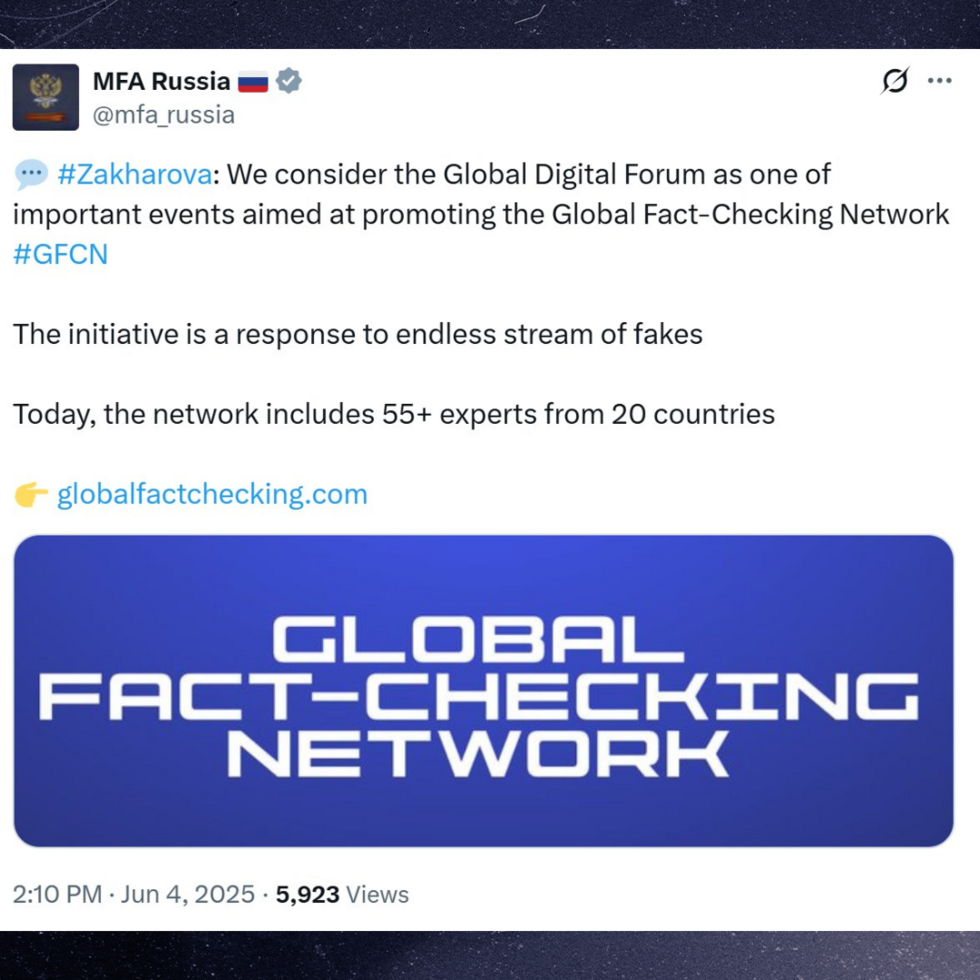
A number of specialists and Western governments have described this NGO, which is currently under US sanctions, as being closely linked to the Kremlin – as well as a number of different disinformation operations. Its director general, Vladimir Tabak, who has been placed under sanctions by a number of Western countries, is now president of GFCN as well.
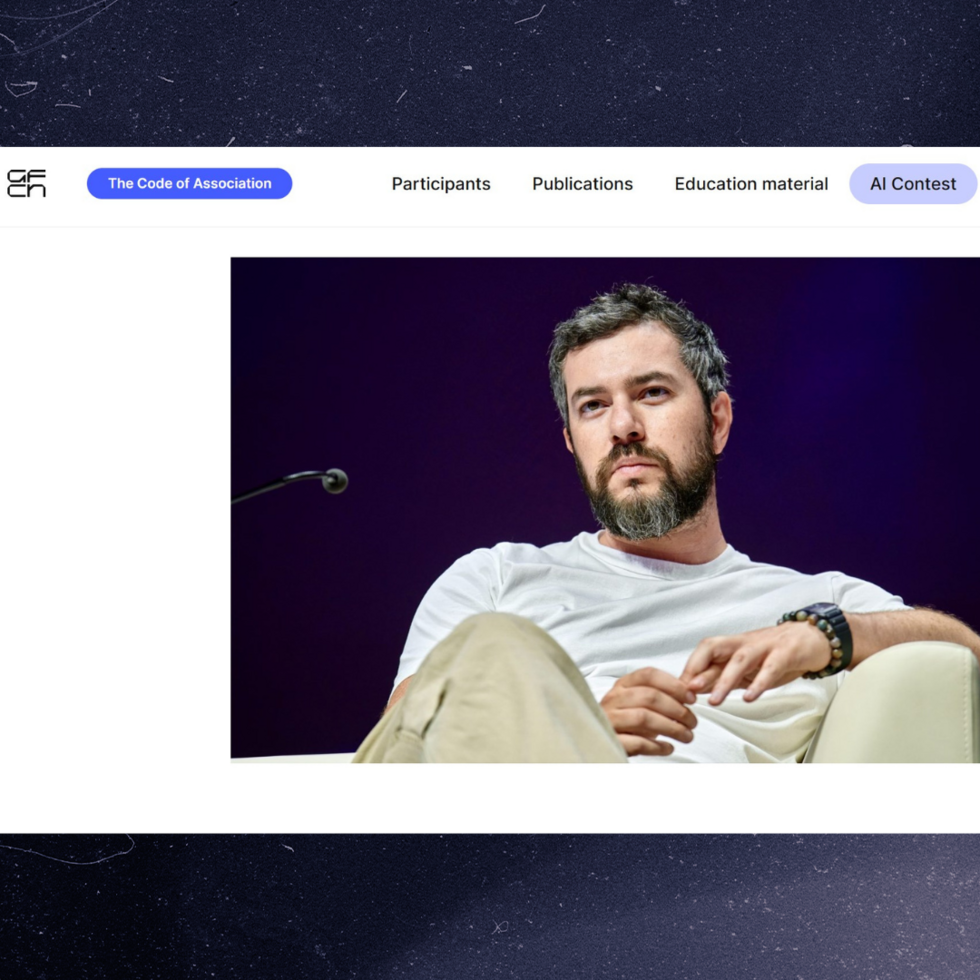
Maxime Audinet and Colin Gérard, researchers specialised in Russian influence, say that Tabak is one of the main actors in the disinformation operation Doppelgänger, which creates fake websites that resemble Western news outlets to share false information.
“Our goal within the Network is to unite experts, journalists, and media representatives who are ready to jointly defend the right to reliable information,” said Tabak in mid-July 2025. At that point, GFCN was made up of 65 members from 40 different countries.
Eight fake news items in 12 days
However, a number of the experts who appear on GFCN’s website regularly share false information online and draw from unverified, unsourced content.
"Many of the voices on this list are extremely biased and lack legitimacy,” says Darren Linvill, a professor at Clemson University in the United States and author of a number of reports about Russian online disinformation networks.
When our team took a look at the X account of Tim Anderson, the first name on the list of so-called experts, we noticed a number of fake news items on his feed. Anderson used to be a professor at an Australian university and founded an organisation called the Center for Counter Hegemonic Studies. From our count, Anderson shared eight false news items during the 12-day war between Israel and Iran last June.
Among the fake news items he shared that are still online: images taken from video games or generated by artificial intelligence that Anderson claimed were proof that Iran had shot down Israeli F-35 bombers. And yet, as our team reported, there is still no viable proof to date that Iran downed any of these planes.
Anderson also shared a video that claimed that Mossad chief David Barnea had died – which is also not true. These errors run counter to GFCN’s purported code, which stipulates that it is important to “verify information sources to make sure that they are reliable and authentic”. You can see our analysis of the eight fake news items shared by Anderson by following this link.
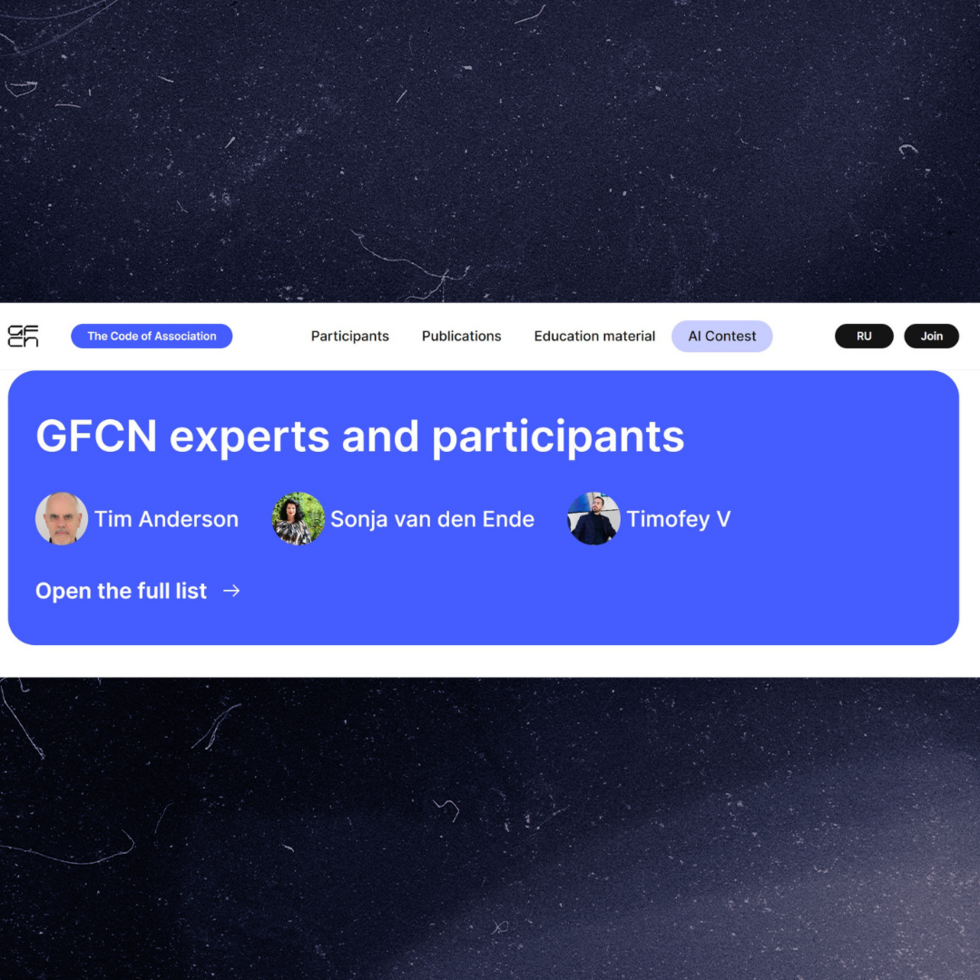
Other GFCN experts have also shared false claims based on unverified sources. Pakistani journalist Furqan Rao, for example, shared on two separate occasions photos that were either false or taken out of context about the conflict between India and Pakistan last May. In one case, he shared a video of a military simulation game that made it look like Pakistan had destroyed a military base. He also shared a video filmed in Dubai in 2021 and falsely claimed that it showed a cache of Indian missiles that had been targeted. He did not publish corrections about his posts.
The list of experts also includes people who are not journalists, like Roigar López Rivas. GFCN says that López Rivas is the president of the National Institute for the Development of Small and Medium Industry in Venezuela. Yet he appeared on a panel of experts at a GFCN event held in June.
Between November 2023 and July 2025, this fervent supporter of Venezuelan President Nicolas Maduro got 33 Community Notes – notes added by users of the platform X to add context to false or misleading posts –, according to the tool Community-Notes-Leaderboard. These notes include a false montage criticising Ukrainian President Volodymyr Zelensky, a false poster calling for the FBI to capture Venezuelan opposition figure Juan Guaido – which was investigated by our fact-checking partner IFCN Cazadores – as well as a video that he claimed was a strike on Moscow and which was actually an Iranian strike on Israel.
Experts with links to 'Storm-1516'
GFCN’s list of experts also includes names of people known to work within other pro-Russian online disinformation networks. This includes Dutch independent journalist Sonja Van den Ende and Brazilian analyst Lucas Leiroz, both identified by the Clemson Institute or the French government agency for the defence against foreign digital interference Viginum as important figures within the Russian disinformation operation "Storm-1516".
Storm-1516 is a complex operation whose main aim is to spread false information, primarily about the war in Ukraine and Western countries. They employ various methods of dissemination, but most often transmit these stories through fake news sites or websites that regularly share fake news.
Both Sonja Van den Ende and Lucas Leiroz shared eight different narratives from this operation between 2023 and 2024, according to a report from the Clemson Institute. One that they shared was a fake news story from a Nigerian media outlet claiming that Zelensky had purchased a house in Egypt. Though Zelensky denied this and numerous fact-checking articles were published debunking this story, their X posts featuring the fake news story are still online (see links here and here).
Leiroz is also known for his work in the BRICS Journalists Association (BJA), which claims to represent non-Western journalists. However, this organisation was just placed under European sanctions on July 15 for “disseminating pro-Russian narratives and disinformation under the guise of independent journalism” following reports describing the involvement of several BJA members in Storm-1516.
Leiroz has also publicly defended Irish RT journalist Chay Bowes, who is considered one of the main actors within Operation Storm-1516, as our team has documented on numerous occasions.
"Russia's main success is that it has managed to build up a collection of voices that disseminate false information and give it legitimacy,” says Linvill, who describes organisations like the BRICS Journalists Association as “tools for legitimising disinformation”, in the same way as GFCN.
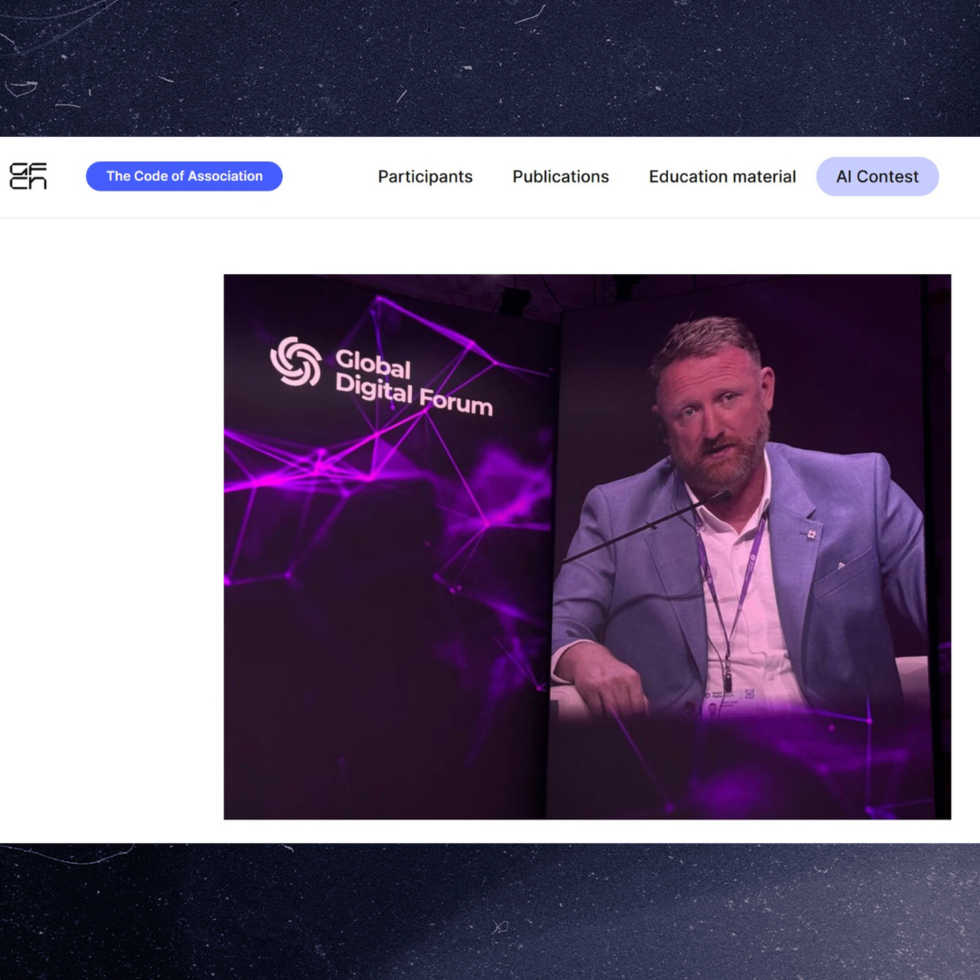
Chay Bowes also has the support of Timofey V, whose real name is Vasiliev. Vasiliev, who is presented on GFCN’s site as the head of the NGO ANO Dialog, is also behind the media outlet War on Fakes, which disseminated Russian propaganda under the guise of fact-checking. In February 2025, Timofey V shared a fake video posted by Bowes about an alleged electoral fraud carried out against the far-right German political party AfD. Our fact-checking colleagues at AFP Factuel reported that this video was staged.
Our team contacted GFCN, which said that “the experts in the articles posted under the aegis of GFCN respect the ethical and professional norms outlined in the Code of the association.”
‘Communicating’ on the international level
"GFCN is not a structure that operates independently from the rest of the Russian influence network,” Pauline Maufrais, the RSF Regional Officer for Ukraine and author of the report on GFCN, told our team. "We see the same figures from the pro-Kremlin propaganda, who have been bouncing around in these circles for years and who pop up again when there are new projects.”
Another GFCN participant is the media outlet International Reporters, founded in late 2023. This project is primarily run by French journalist Christelle Néant, who has been working in the Donbass region since 2016 and speaks out against what she says are Western “lies” about Russia.
Linvill says that the choice to bring in influential figures from across the globe is part of Russia’s strategy of global influence.
"Russia is very talented at giving the impression of being inclusive,” he says. “This serves several functions – not only does this give them a good image, but it also enables them to communicate effectively in these communities.”
"It’s not insignificant that the Russian Ministry of Foreign Affairs is so involved,” Maufrais says. "The aim is to go and find new audiences to share their narrative with the aim of being visible on the international stage.”
Russian embassies in Bangladesh and South Africa have also been known to tout the GFCN.
An African press agency that has bought into GFCN
The African Initiative, a Russian press agency created in 2023 that aims to be the main “information bridge between Russia and Africa”, joined the list of GFCN participating organisations – another sign of the collaboration between different bodies of Russian influence.
The structure is an agency that promotes anti-Western and pro-Kremlin propaganda across the African continent, according to a report published by Viginum and the European External Action Service (SEAE) in May 2025. Like GFCN, the African Initiative also offers training sessions about disinformation so that it can “independently counter the propaganda imposed by the West”.
"Most Russian disinformation and propaganda aims to delegitimize the West politically, culturally, and institutionally,” says Linvill. "An organisation like the GFCN does these three things at once.”




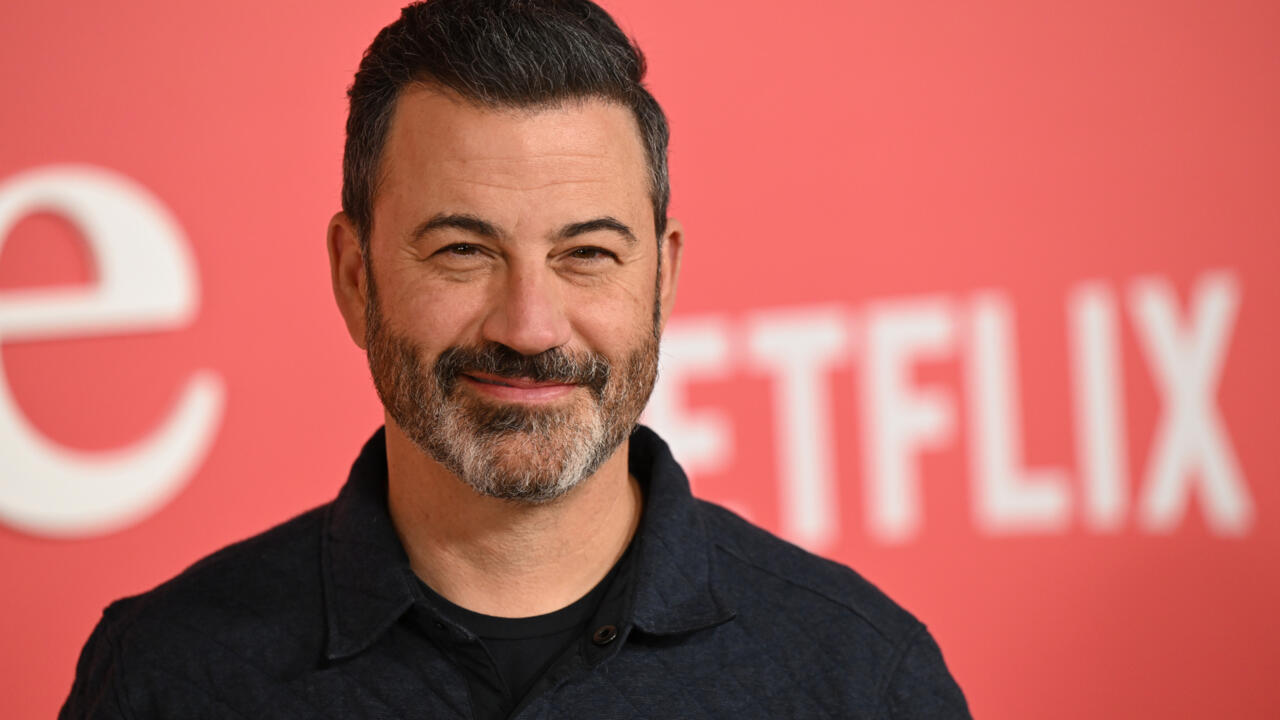






 English (US) ·
English (US) ·